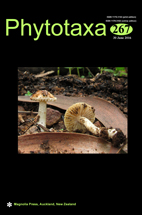Abstract
Artemisia Linnaeus (1753: 845) is the largest genus of the tribe Anthemideae (Asteraceae). It comprises about 350–500 species and is distributed mainly in the Northern Hemisphere (Torrell et al. 1999, Shultz 2006, Garcia et al. 2011, Ling et al. 2011). Traditionally it was classified into 5 subgenera, i.e., A. subgen. Artemisia, A. subgen. Absinthium (Miller 1754: unpaged) Lessing (1832: 264), A. subgen. Dracunculus (Besser 1835: 8) Rydberg (1916: 251), A. subgen. Seriphidium (Besser ex Lessing 1832: 264) Fourreau (1869: 89), and A. subgen. Tridentatae (Rydberg 1916: 282) McArthur in McArthur et al. (1981: 590), largely based on floral and capitula characters (Shultz 2006). Although this subgeneric classification was partly incongruent with recent molecular studies (Pellicer et al. 2014), it is still widely used. There are about 217 species in China, representing 4 subgenera (Ling 1991, Ling et al. 2011), the only exception being A. subgen. Tridentatae, which is endemic to North America (Shultz 2006).

